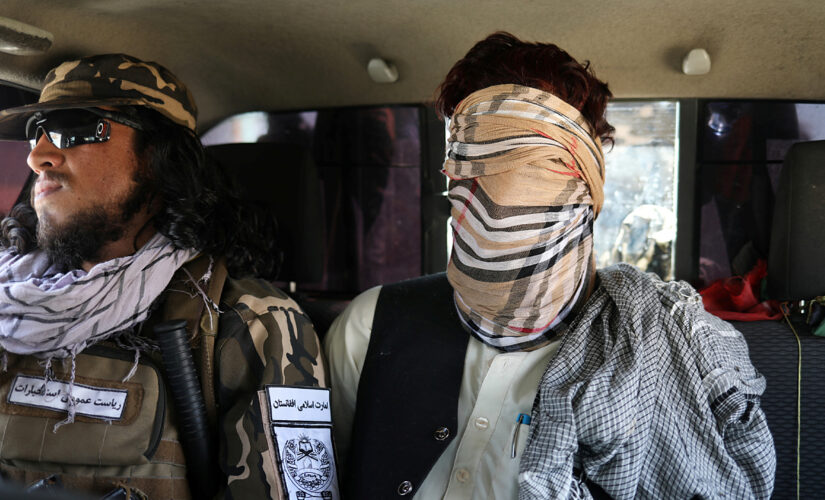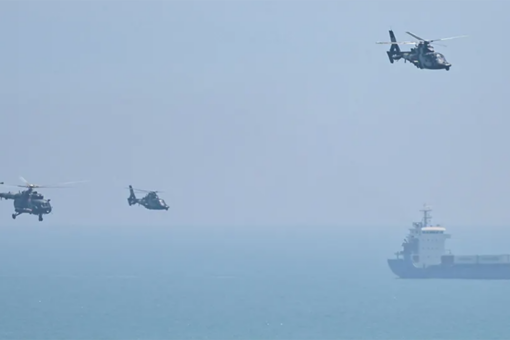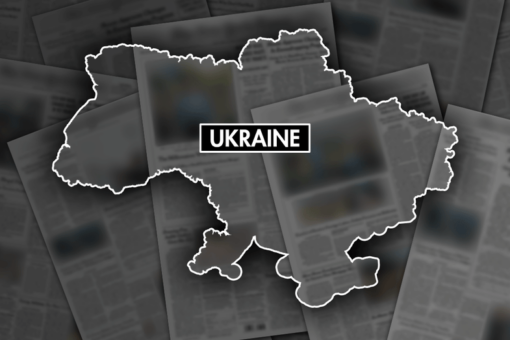NEWYou can now listen to Fox News articles!
The Taliban are finding it’s much more difficult being the governing authority of Afghanistan than it was waging an insurgency campaign against the previous internationally backed government of Ashraf Ghani.
Since taking Kabul in August 2021, the Taliban have had to consolidate power and assert control over a weary and war-torn nation, battle an ISIS affiliate and tamp down the resistance movement in Panjshir province.
When the Taliban took Kabul, many anti-Taliban forces within the U.S.-trained armed forces and former members of the Ghani government fled to the Panjshir Valley, a bastion of anti-Taliban resistance north of Kabul where the Taliban had yet to exert full control. Other leading opposition figures fled to neighboring Tajikistan, where the government in Dushanbe has provided a safe haven.
The rugged and mountainous Panjshir Valley, which held firm against Soviet occupation in the 1980s and Taliban rule in the 1990s, is the ideal location to lead an insurgency. Almost immediately after the Taliban seized Kabul, anti-Taliban forces quickly announced their opposition to the new government and initially were able to hold off the Taliban’s advance on the valley. Unfortunately for the resistance movement, the Taliban launched a major offensive and captured the valley in early September 2021, with Taliban forces raising their flag over the Bazarak provincial capital center.
Ahmad Massoud, the lead figure of the National Resistance Front (NRF), vowed to continue the fight against the Taliban even with the loss of the valley being a devastating blow to the movement. His father, Ahmad Shah Massoud, was a prominent Mujahidin rebel who fought against the Soviet invasion in the 1980s and was assassinated by al Qaeda operatives just two days before the 9/11 attacks. Massoud originally fled to Panjshir and his exact whereabouts are unknown, but he is believed to be somewhere in Tajikistan.
A suspected ISIS member sitting blindfolded in a Taliban Special Forces’ car in Kabul, Afghanistan, Sept. 5, 2021.
(West Asia News Agency via Reuters, File)
Massoud, who carries the weight of his father’s legacy as the leader of the Northern Alliance, is joined by former Vice President Amrullah Saleh as the two leading figures of the NRF – although the NRF has insisted that Massoud was the sole leader. Other members of the ousted Ghani government have taken leadership roles in the NRF, with former soldiers of the now-defunct Afghan National Security and Defense Forces filling the ranks of the combatants.
Not much is publicly known about the internal dynamics of the NRF other than that Massoud is its symbolic and operational leader. Saleh, for his part, is a bit of a complicated figure.
“On the one hand, Saleh fought with the Northern Alliance against the Taliban in the 1990s, on the other hand, Saleh is previously tied with the former Ghani government,” Peter Mills, an Afghanistan researcher at the Institute for the Study of War, told Fox News. While Saleh is not specifically to blame for the Ghani government’s failure to stave off the Taliban, he is nevertheless associated with the Ghani’s government’s endemic corruption and failures, and that complicates his ties within the NRF.
Saleh also has a tendency to freelance and go his own way, which may undercut the NRF’s position that Massoud is the face of the resistance.
Ali Maisam Nazary, the head of foreign relations for the NRF, has stressed unity around Massoud, saying the NRF has made progress since the resistance began.
“In the first month of resistance we were fighting a conventional war in Panjshir province and Andarab Valley, but because of limitation of resources we had to change tactics, so we adopted a strategy we used in the 1980s of unconventional warfare,” Nazary told Fox News. “For the past seven months we have been fighting this unconventional fight in Panjshir and surrounding provinces.”
Nazary noted that fighting has intensified in recent months and the NRF expanded their presence from two to 12 provinces in Afghanistan.
Despite the NRF’s courageous defianceof Taliban rule, the NRF as it’s currently constituted, is unlikely to take down the Taliban’s government. “While the NRF constitutes a security threat to the Taliban and is seen as a serious, strategic priority for the Taliban’s forces, its threat to Taliban governance is not as serious,” Caroline Rose, a senior analyst and head of the Power Vacuums Program at the New Lines Institute, told Fox News.
The NRF also has lacked sufficient political and material support from an external power, which is an integral component of sustaining a successful insurgent campaign. Eight months into Taliban rule, neighboring Tajikistan is one of the only countries in Central Asia that has been openly opposed to the Taliban and has provided a sanctuary for Afghan opposition leaders.
Dushanbe was often critical of the Taliban’s repression, during their previous stint in power from 1996 to 2001, against Afghanistan’s Tajik community, which comprise roughly 26% of the population, and other ethnic minority groups. When the Taliban regained control of Kabul, the Tajik government refused to recognize the newly installed Taliban government unless they formed an inclusive government that included ethnic Tajiks. Thus far, the Taliban have not asked representatives of Afghanistan’s ethnic minorities to join their government.
A suspected ISIS member siting blindfolded in a Taliban Special Forces’ car in Kabul.
(West Asia News Agency via Reuters, File)
US ABANDONED $7B IN MILITARY EQUIPMENT IN AFGHANISTAN AHEAD OF TALIBAN TAKEOVER
As the war in Ukraine highlights, the international community is deeply committed to the government of President Volodymyr Zelenskyy and the Ukrainian armed forces and is providing unprecedented amounts of offensive and defensive weapons, a major factor in Ukraine’s ability to hold the capital and also launch major counteroffensives to drive the Russians back.
Ukraine remains a sovereign and independent country and it seems more than certain that the Russians have abandoned their hopes of taking the entire country. Other than providing a safe haven for anti-Taliban forces and rhetorical support for their cause, the Tajik government has not offered the kinds of military or financial support that would be necessary for the NRF to make any significant gains against the Taliban.
The NRF, at best, can be a localized resistance force based mainly out of the Panjshir Valley, but it will be hard for the group to expand its influence and pose a legitimate and existential challenge to the Taliban’s emirate. “The NRF is capable of killing Taliban forces. And we may see an uptick in such attacks this summer. But the group currently does not represent a strategic threat to the Taliban,” Arif Rafiq, non-resident scholar at the Middle East Institute, told Fox News.
The NRF is not the only resistance front challenging the Taliban, although Massoud’s organization receives the most attention. There are several other resistance groups that formed in the wake of the Taliban’s return to Kabul. Franz Marty, a fellow at the Swiss Institute for Global Affairs who’s been living and reporting in Afghanistan for over seven years, says while all the groups share similar goals of wanting to oust the Taliban, they do not operate as an umbrella organization and there’s “no significant cooperation or coordination among them.”
The Panjshir Valley resistance and other armed groups are not the only headaches for the Taliban. The Taliban are also locked in a struggle against Islamic State Khorasan (ISIS-K), the Afghan ISIS affiliate behind the Kabul airport bombing that killed 13 U.S. troops last August. A recent string of ISIS terrorist attacks left at least 77 dead and many wounded, poking holes in the Taliban’s law and order message to the Afghan people.
Alexanda Kotey is seen in this undated handout picture in Amouda, Syria, released Feb. 9, 2018.
(Syrian Democratic Forces/Handout via Reuters, File)
ISIS ‘BEATLE’ MEMBER SENTENCED TO LIFE IN PRISON FOR TERROR BEHEADINGS
While the most significant presence of the NRF is in northeastern Afghanistan, ISIS-K is expanding its reach across the country. ISIS-K carries out most of its attacks against Kabul, Nangarhar and Kunar. Recent attacks were carried out in Balkh and Kunduz, indicating that their strength is increasing in northern Afghanistan, according to Mills.
The patchwork of resistance and ISIS-K threats are unlikely to topple the Taliban, but the twin crises are a major roadblock to the Taliban delivering on the many promises, including peace and stability, that many Afghans were craving after nearly 40 years of war.
“There’s a challenge that the Taliban are being pulled in multiple directions and their security forces are being stretched thin in dealing with these multiple threats,” Mills stated.
Not even a year in power, the Taliban seem to lack any original governing philosophy to address the many crises facing the Afghan people. The Taliban are unable to provide basic services to the Afghan people and this dynamic is fueling discontent among its restive population. International aid funded 75% of Afghanistan’s pre-Taliban government and once that aid stopped flowing when the Taliban took power, the economy and health care industry collapsed.
The United Nations estimated that over 24 million people are in dire need of humanitarian assistance with at least 55% of the population facing acute hunger, including nine million in a state of emergency food insecurity.
CLICK HERE TO GET THE FOX NEWS APP
The Taliban’s archaic policies toward women, banning them from most occupations, have compounded the economic crisis. With so many people forced out of the labor market, children are desperately being thrown into the workforce to fill the gap. A February 2022 survey by Save the Children found that one in five Afghan families were forced to send their children to work as household incomes plummeted after the Taliban took power. Save the Children estimates that over one million children were forced into child labor.
The Taliban’s second try at ruling Afghanistan is turning out much like their first iteration: chaotic and desperate, with opposition on multiple fronts.




